A pictorial-heavy look at my August 2007 trip to the French capital of Paris, my first visit to one of Europe’s most iconic cities and one of the most visited tourist destinations on earth.
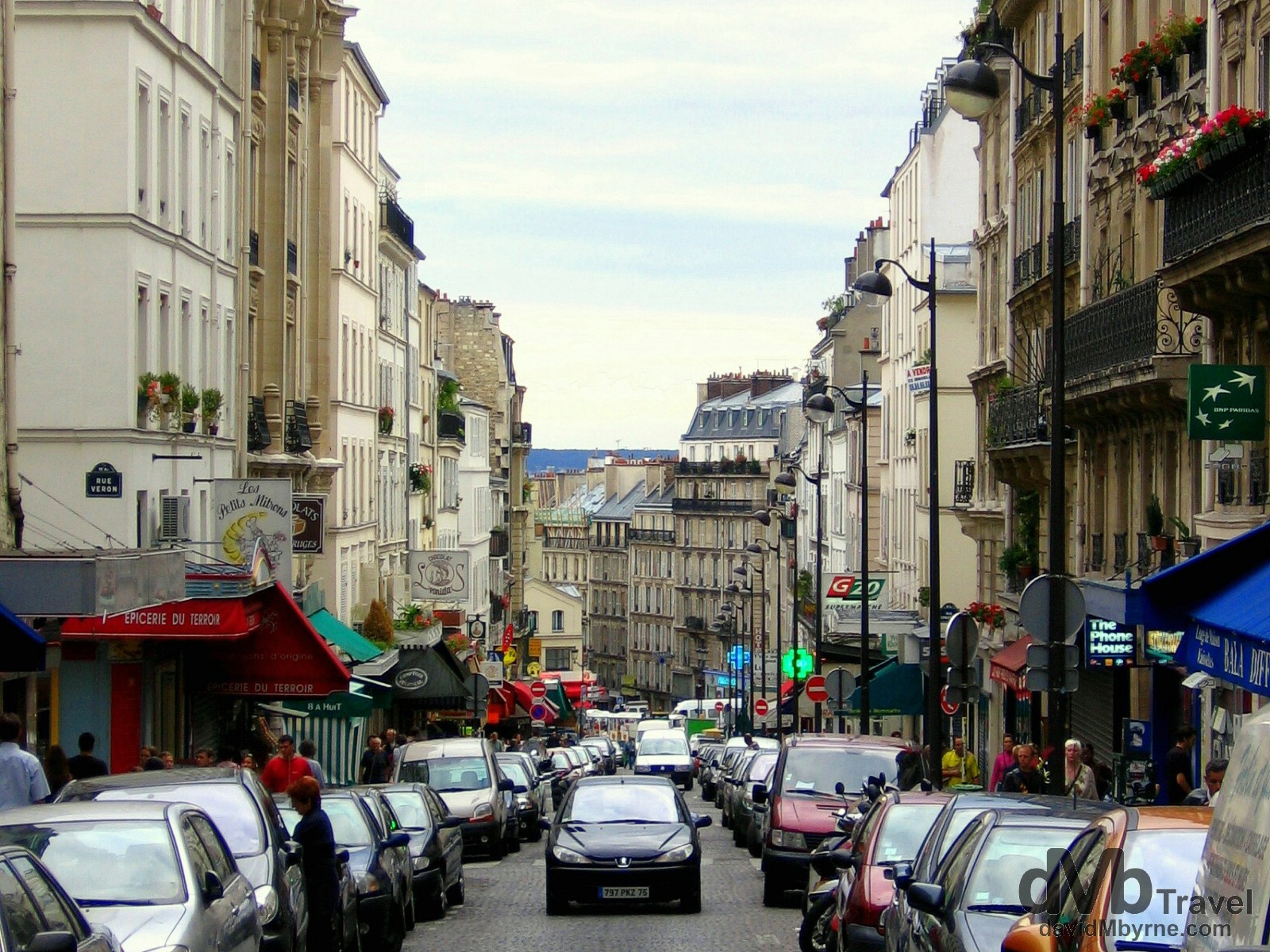
One of the wider streets in Pigalle/Montmartre, the district of Paris I called home. Paris (![]() ), France. August 17, 2007.
), France. August 17, 2007.
– Earnest Hemingway
Basilique du Sacre Coeur
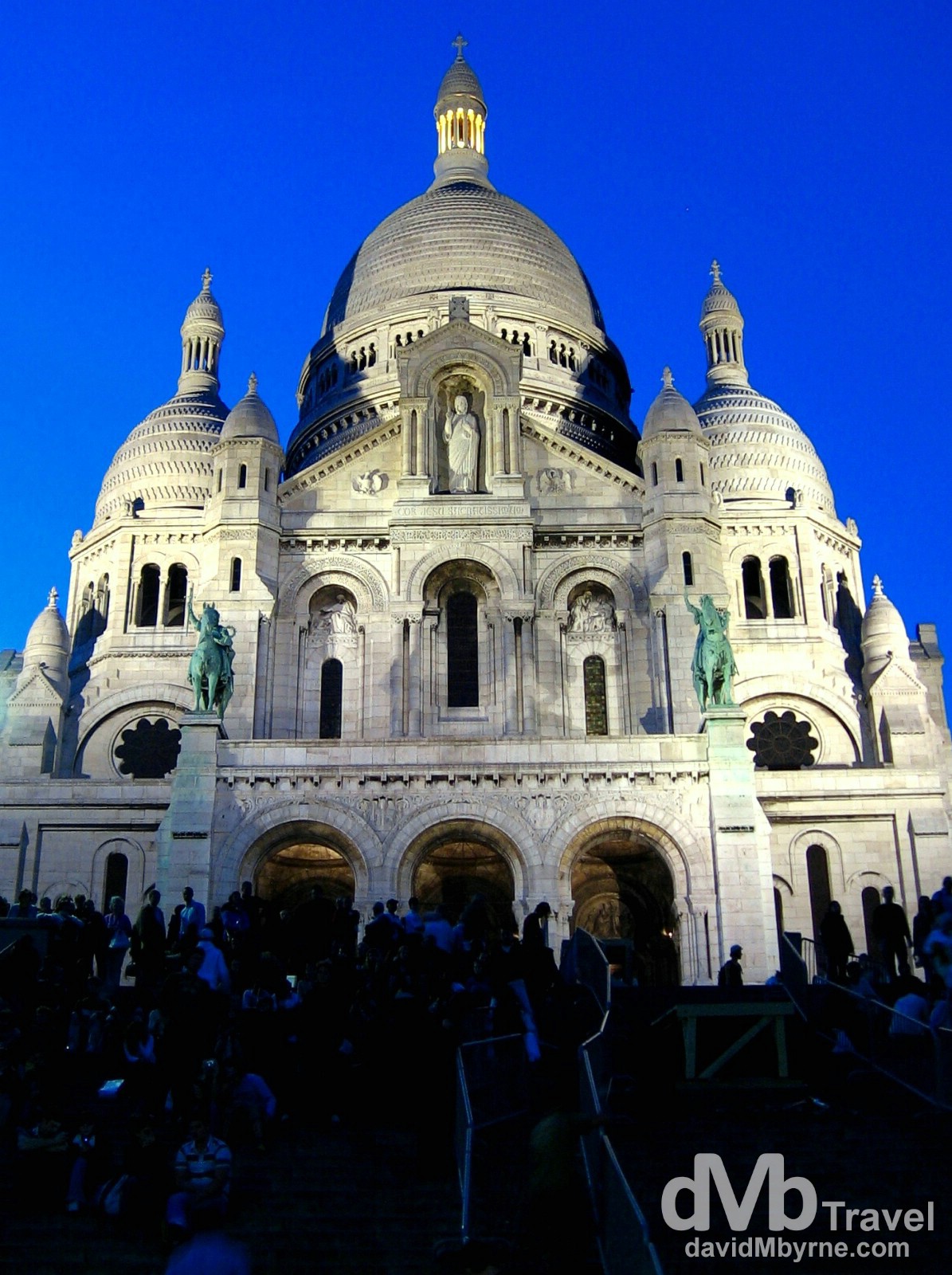
Basilique du Sacre Coeur (Basilica of the Sacred Heart) on Montmartre hill, Paris, a romantic and graceful pastiche whose white pimply domes are an essential part of the Paris skyline. Due to its perch on Montmartre Hill, the basilica’s viewing tower is almost as high as the Eiffel Tower and shows the layout of the whole city (the view from the base isn’t too bad either). Construction was started in the 1870s and was built from contributions pledged by Parisian Catholics after the humiliating Franco-Prussian war of 1870-71. Basilique du Sacre Coeur, Montmartre, Paris, France. August 17, 2007.
Arc de Triomphe
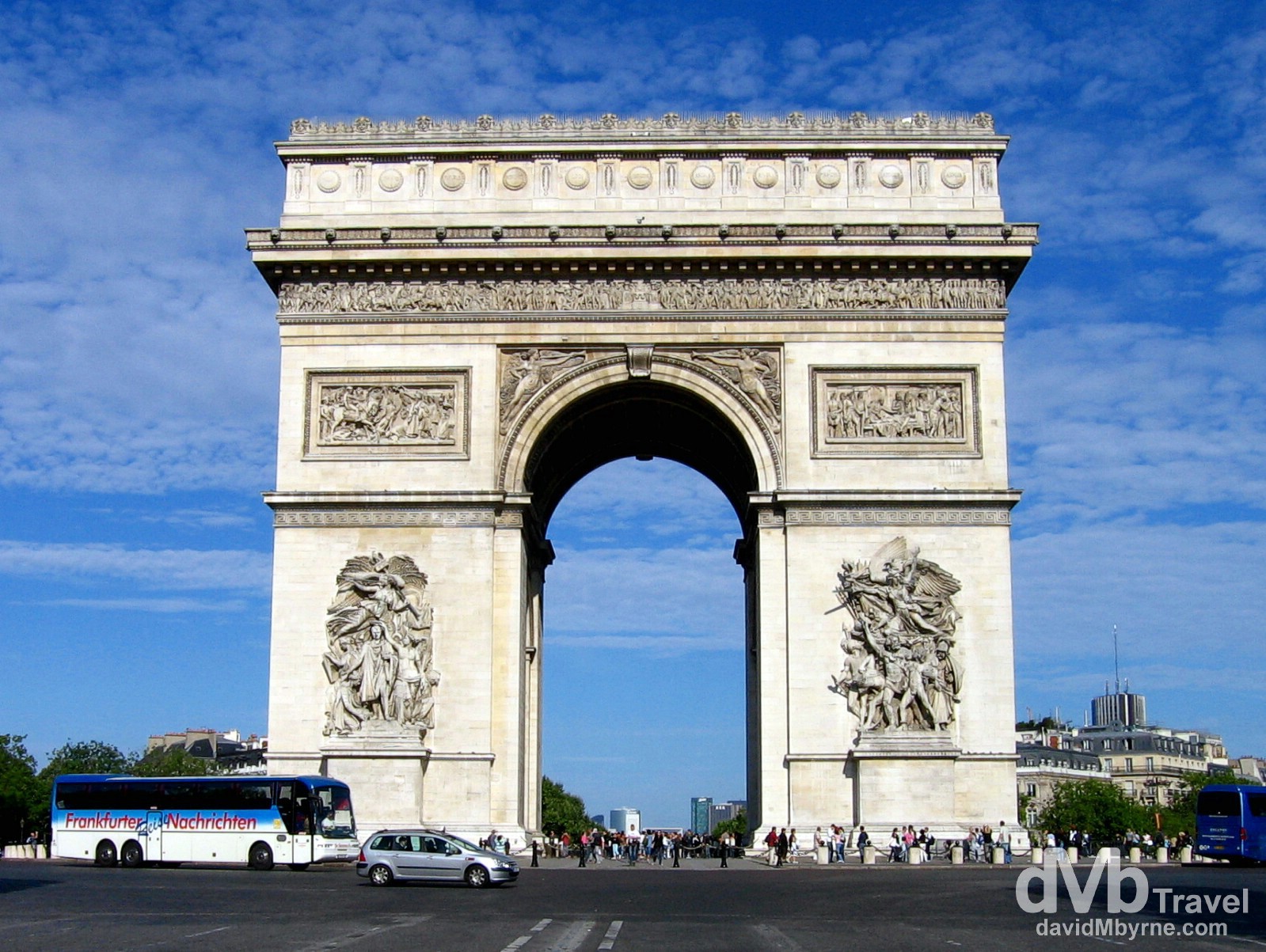
Towering above the traffic in the middle of Place Charles-de-Gaulle, better known as l’Étoile (star) on account of the twelve avenues radiating out from it, the Arc de Triomphe was started by Napoleon as homage to the armies of France (and himself). It wasn’t actually finished until 1836 by Louis Philippe, who dedicated it to the French army in general. The names of 660 generals and numerous French battles are engraved on the inside of the Arc and reliefs adorn its exterior, the best of which is François Rude’s extraordinarily dramatic Marseillaise (to the right) in which an Amazon-type figure personifying the Revolution charges forward with a sword, her face contorted in a fierce rallying cry. A quiet reminder of the less glorious side of war is the Tomb of the Unknown Soldier, placed beneath the arch and marked by an eternal flame that is stoked up every evening at 6.30 p.m. by War veterans. I didn’t but seemingly if you climb up the 280 steps to the top you’ll be amply rewarded by splendid views, especially all the way down Avenue des Champs-Élysées, Paris’ most famous street, to the Louvre Palace, home of the world famous museum. Arc de Triomphe, Paris, France. August 18, 2007.
The Eiffel Tower
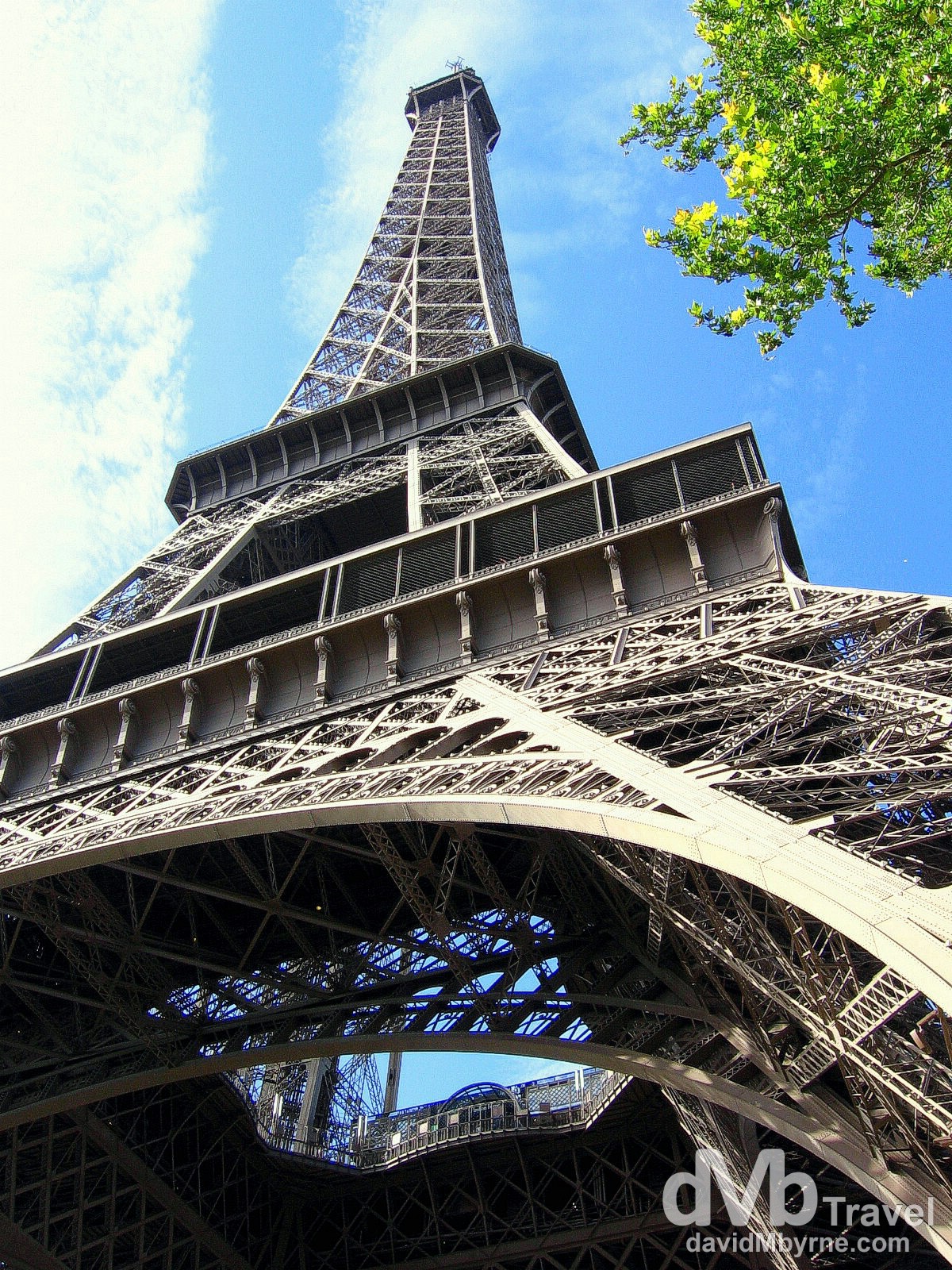
It’s hard to believe that the Eiffel Tower, the quintessential symbol both of Paris and of the brilliance of industrial engineering, was designed to be a temporary structure. Late 19th century Europe had a decadent taste for such giant-scale, colonialist-capitalist extravaganzas, but the 1889 Exposition – for which the tower was built – was particularly ambitious. When completed the structure was, at 300 metres, the tallest in the world. Reactions were violent. Outraged critics protested “in the name of menaced French art and history” against this “useless and monstrous” tower. “Is Paris“, they asked, “going to be associated with the grotesque, mercantile imaginings of a constructor of machines?” Curiously, Paris’ most famous landmark was only saved from demolition by the sudden need for wireless telegraphy aerials in the first decade of the 20th century. The tower’s role in telecommunications – its only function even today, apart from extracting money from tourists – has become increasingly important and the original crown is now masked by an efflorescence of antennae. The Eiffel Tower, Paris, France. August 18, 2007.
Place de l’Alma
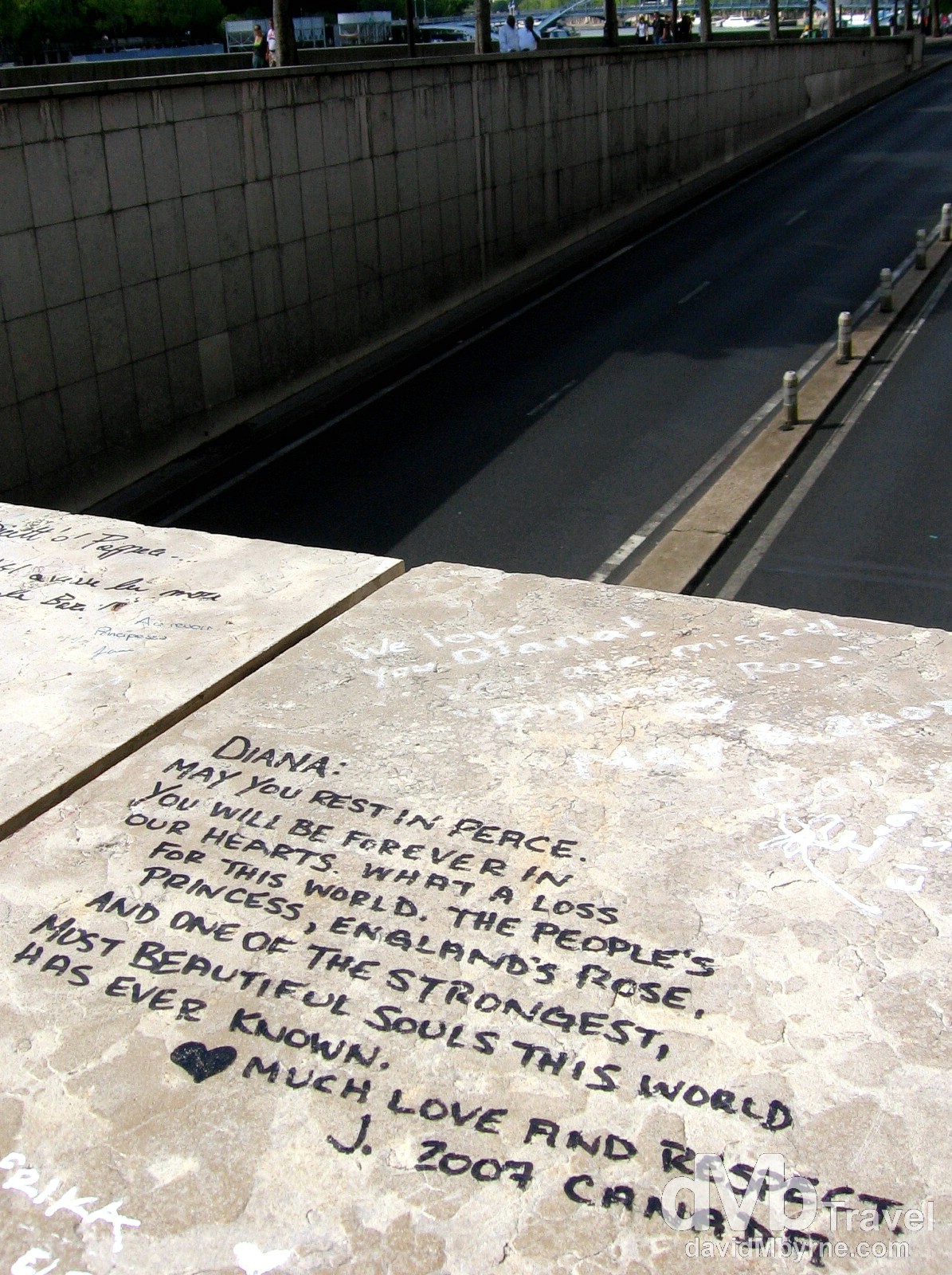
In Place de l’Alma by the River Seine there is a replica of the flame from the Statue of Liberty – given to France in 1987 as a symbol of Franco-American relations. It has been adopted by mourners from all over the world as a memorial to Princess Diana following her fatal car crash in the adjacent underpass, seen here, in August 1997. The walls of the underpass are covered in graffiti with messages like this one. Place de l’Alma, Paris, France. August 18, 2007.
Notre Dame Cathedral
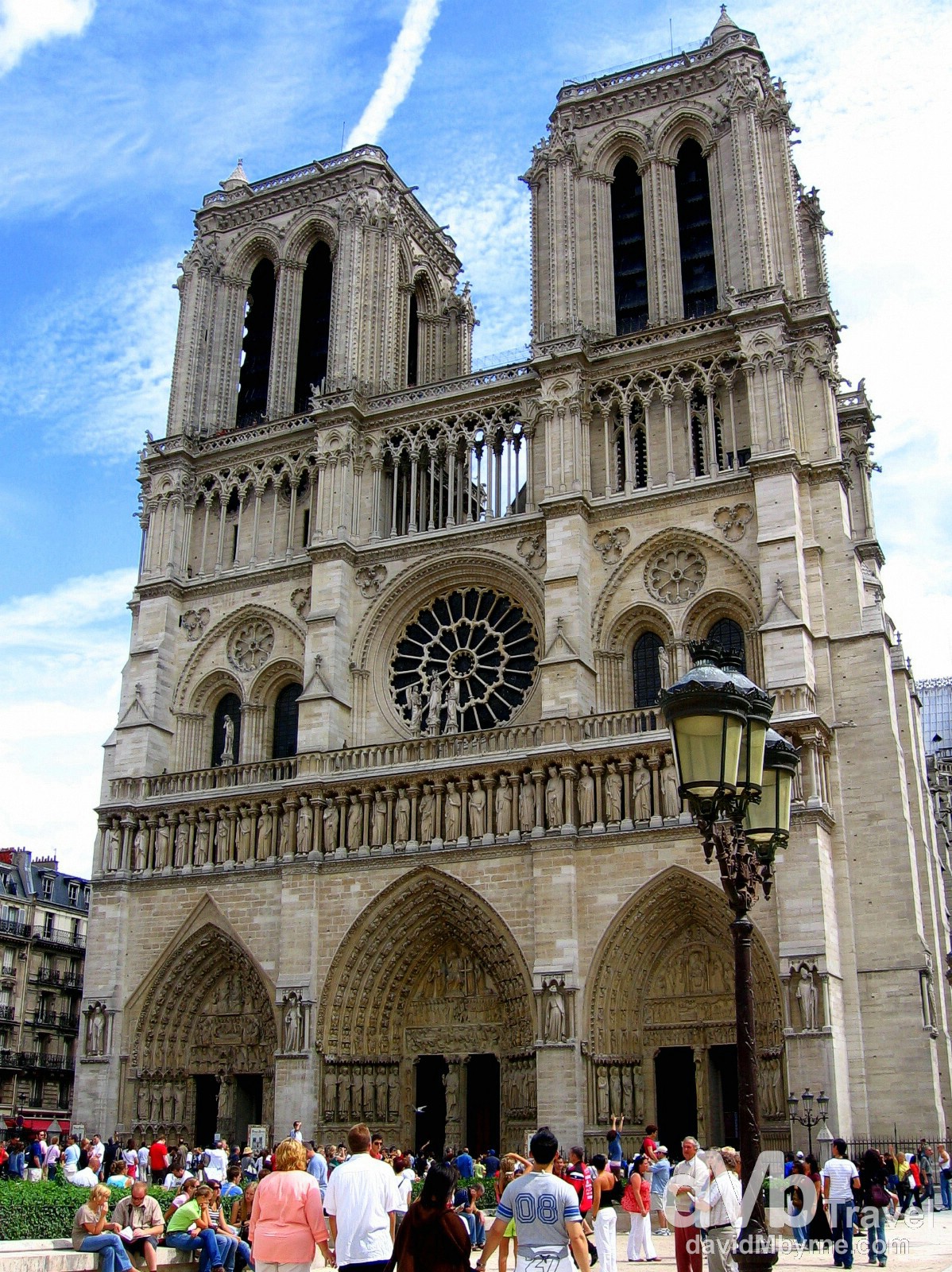
One of the true masterpieces of French Gothic architecture, Notre Dame Cathedral is famed for its stunning stained-glass rose windows, leering gargoyles, 7800-pipe organ and elegant flying buttresses, buttresses I learnt as part of a guided tour were added at a later date to hold the walls up once they were reduced in thickness to accommodate the numerous smaller churches found inside. The cathedral was constructed between 1163 and the mid 14th century, with extensive renovations being carried out in the 19th century. It’s a whopping 130 metres long, 48 metres wide and 35 metres high & with room to accommodate 6000 worshippers. Notre Dame Cathedral, Île de la Cité, Paris, France. August 18, 2007.
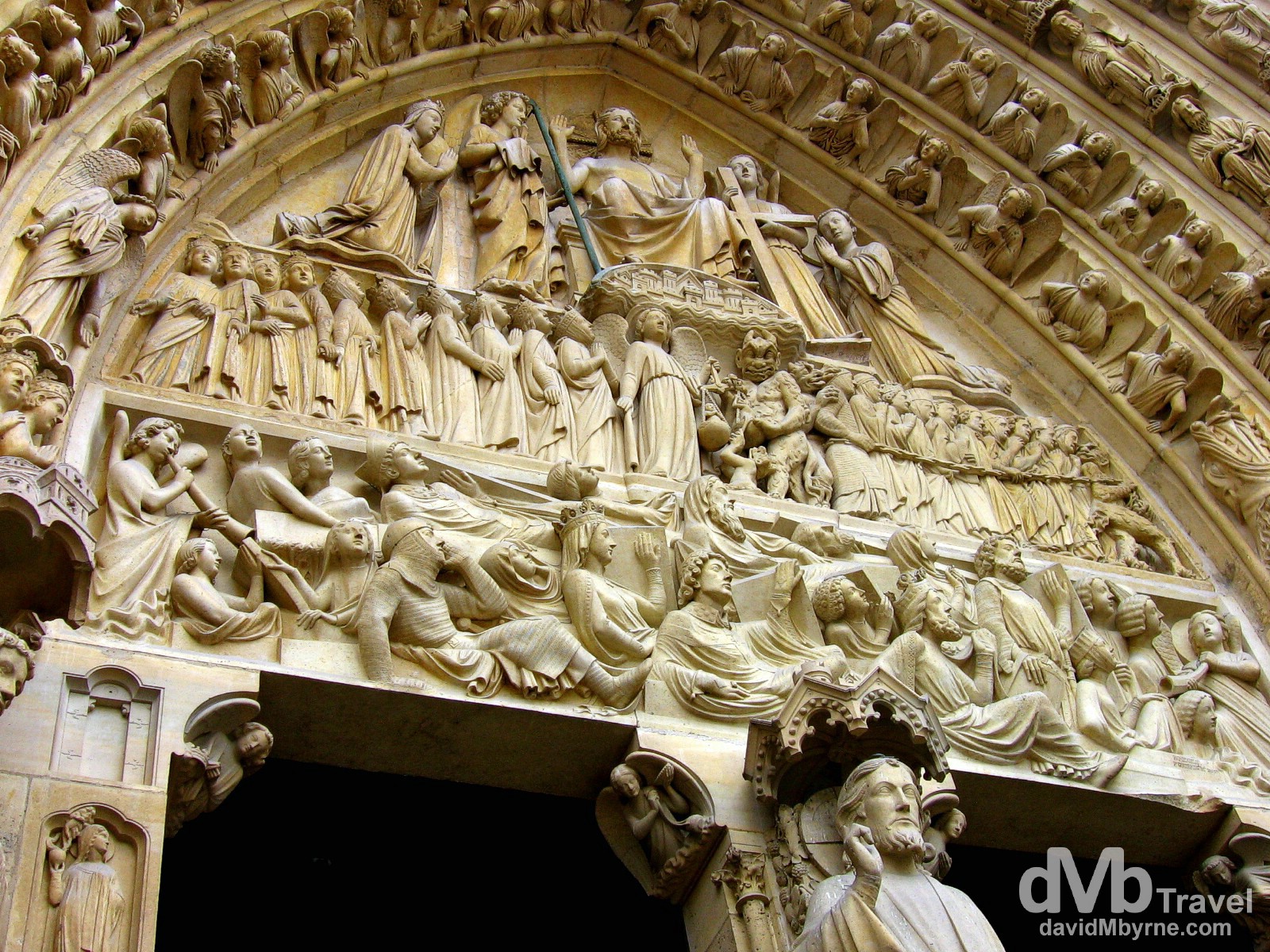
The remarkable carvings that adorn the front facade of Notre Dame Cathedral tell stories from the bible, the Catholic churches way of communicating its message to the masses in a time when there was no common language or script wasn’t commonly available. Notre Dame Cathedral, Île de la Cité, Paris, France. August 18, 2007.
Palace du Louvre || The Louvre Museum
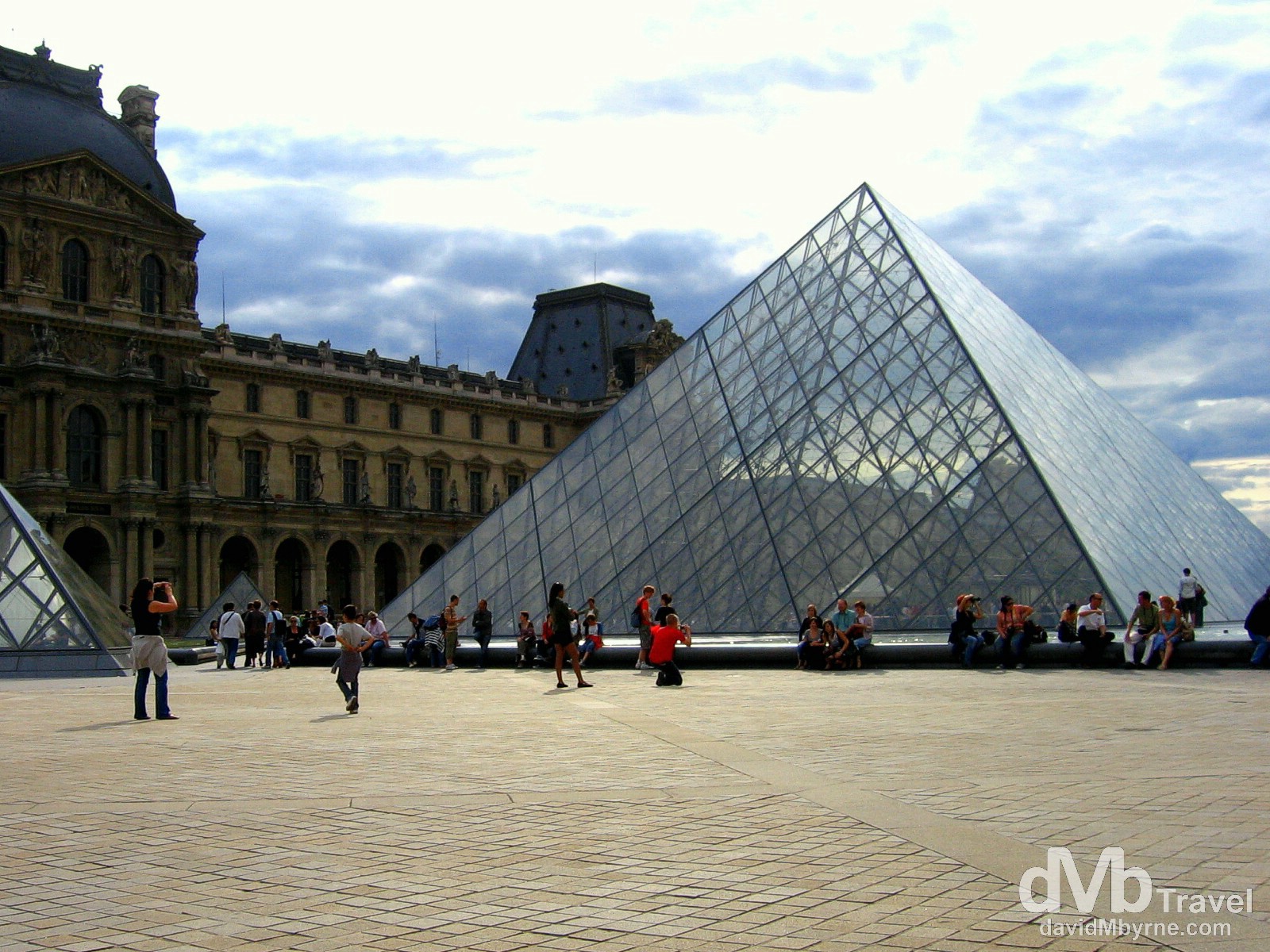
Palais du Louvre (Louvre Palace), which houses the giant collection of the Louvre Museum, cuts a grand Classical swathe right through the centre of Paris, its stately ranks of carved pilasters, arches and pediments stretching west along the right bank of the River Seine. Before becoming a museum during the French Revolution, the Louvre was for centuries the home of the French court and almost every French ruler with a taste for grandeur built on the site, right down to President Mitterand. For all its many transformations over the years the palace as remained a surprisingly harmonious building with a grandeur, symmetry, and Frenchness entirely suited to this most historic of Parisian edifices. The Louvre’s most recognisable feature is its controversial Pyramid. It arrived as part of a makeover in 1989 and erupts from the centre of the palace’s Cour Napoléon (the Napoleon Courtyard) with the main reception area of the museum right below. Louvre Palace, Paris, France. August 18, 2007
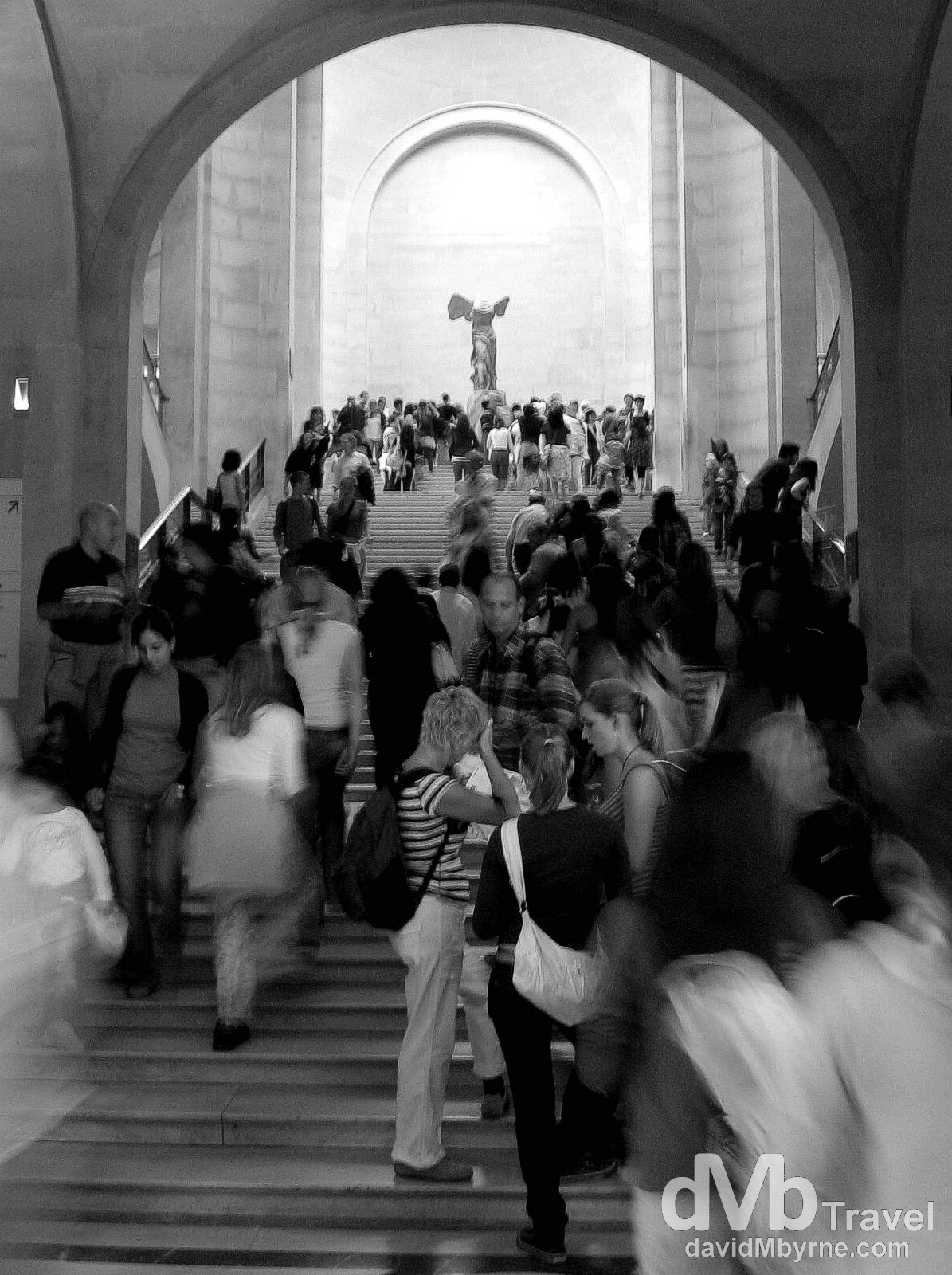
This picture epitomizes the Louvre; busy, grand and classy. It shows the approach to the Italian Renaissance and Grand Gallery section of the museum’s Denon wing. In the distance is one of the most celebrated sculptures in the world, the Winged Victory of Samothrace, a second century BC marble sculpture of the Greek goddess Nike, aka Victory. The Louvre, Paris, France. August 19, 2007.
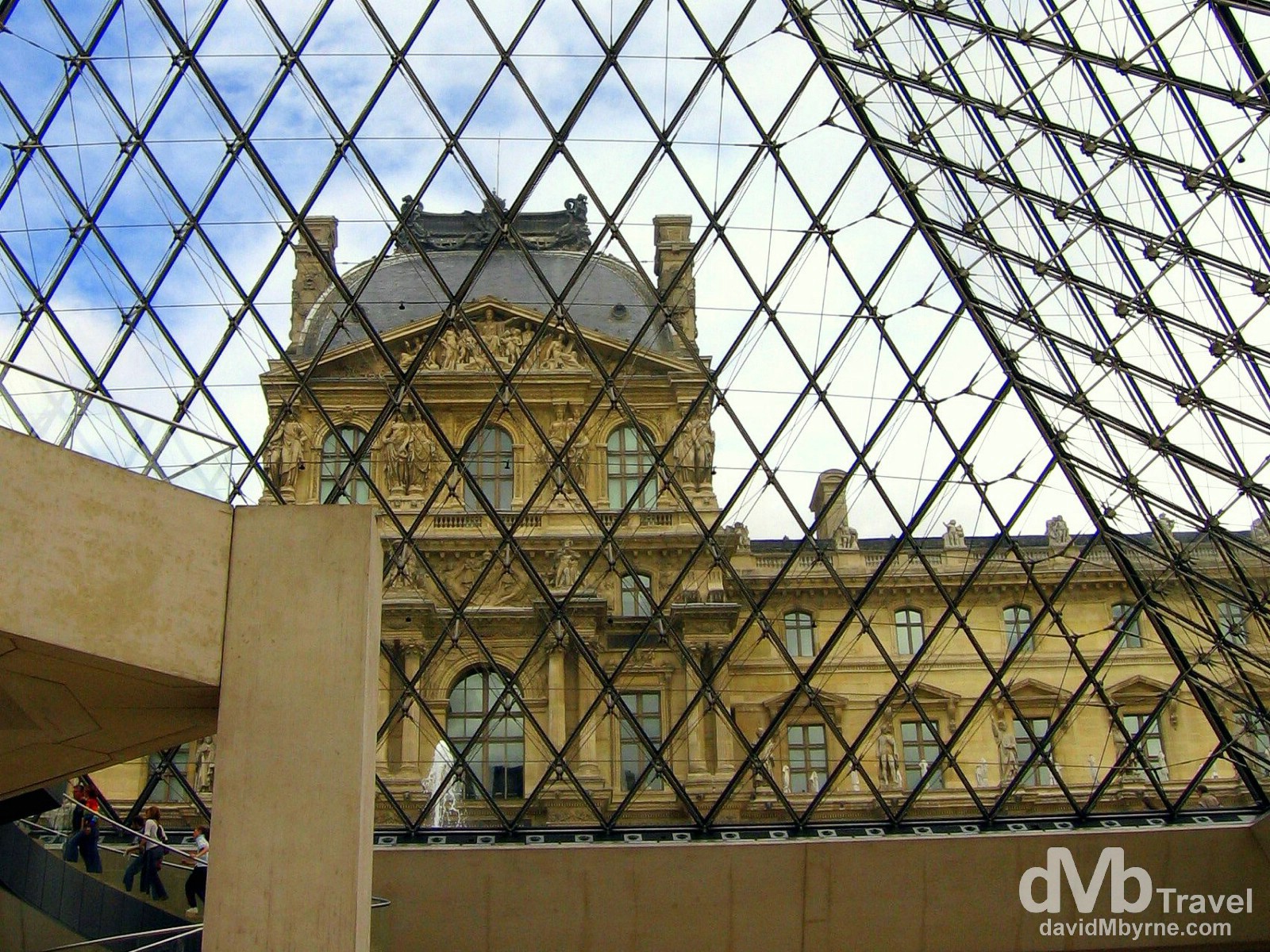
Part of the Richelieu wing of Palais du Louvre as seen through the Pyramid from the Cour Napoléon (Napoleons court), Louvre Museum, Paris, France. August 19, 2007.

The Louvre Pyramid in the centre of the Napoleon Courtyard as seen through an opening in the Palais du Louvre (Louvre Palace), Paris, France. August 18, 2007
Montmartre Cemetery
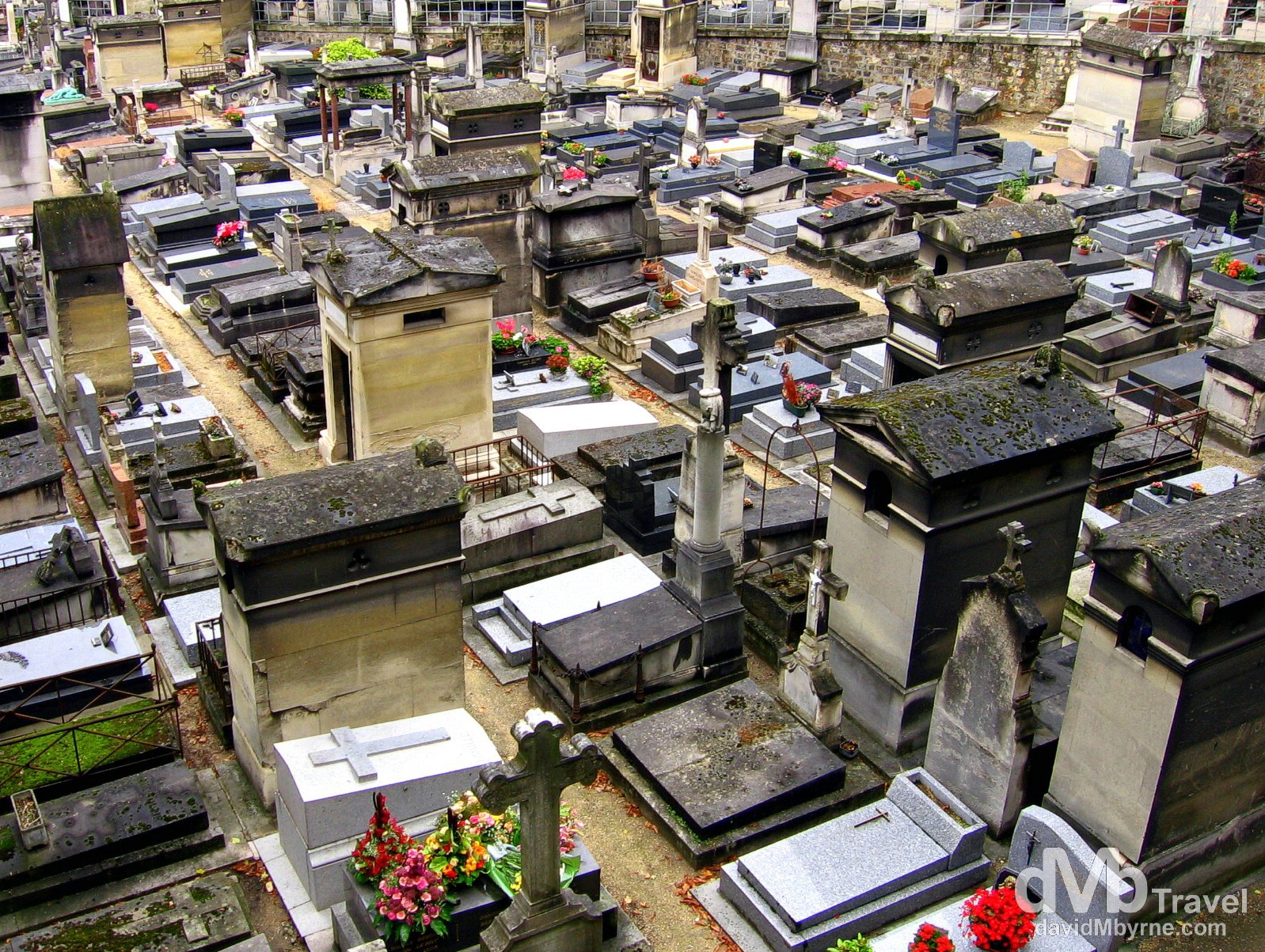
Montmartre Cemetery is tucked down below street level in the hollow of an old quarry, its graves cluttered together in some sort of organised chaos. I was amazed by the style of the graves; virtually all were above ground, grand monuments built to immortalise their occupant (some were the size of a small house). The graveyard is firmly on the Parisian tourist trail – there’s even a map available on entry listing the names & locations of some of the sites famous residents. I searched out the graves of Zola (a French writer), De Gas (a French painter) & Andre Ampre, the French Physicist who scourged me no end during my university days. Montmartre Cemetery, Montmartre, Paris, France. August 20, 2007.
The Catacombs
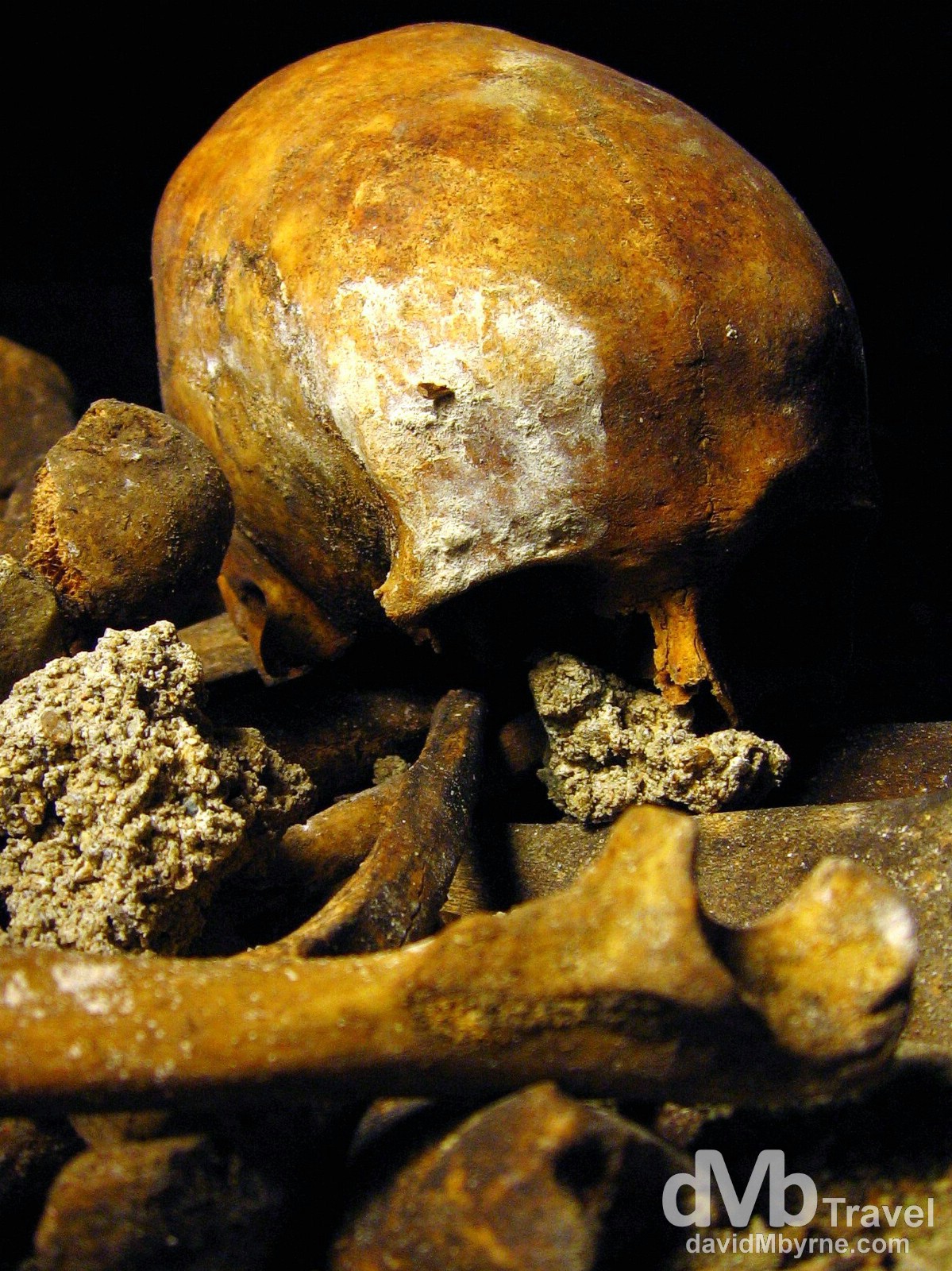
Built in 1785 to solve the problem of Paris’ overflowing cemeteries, the Catacombs contain the skeletal remains of some 6 million Parisians exhumed from graves and stored in the tunnels of three disused quarries. The section accessible to the public was first opened 1810. It’s 20 metres below street level and contains 1.6 kilometres of low-lit, narrow, damp and spooky corridors, all lined with skulls and bones stacked in an orderly and sometimes decorative manner. The Catacombs, Paris, France. August 21, 2007.
Moulin Rouge
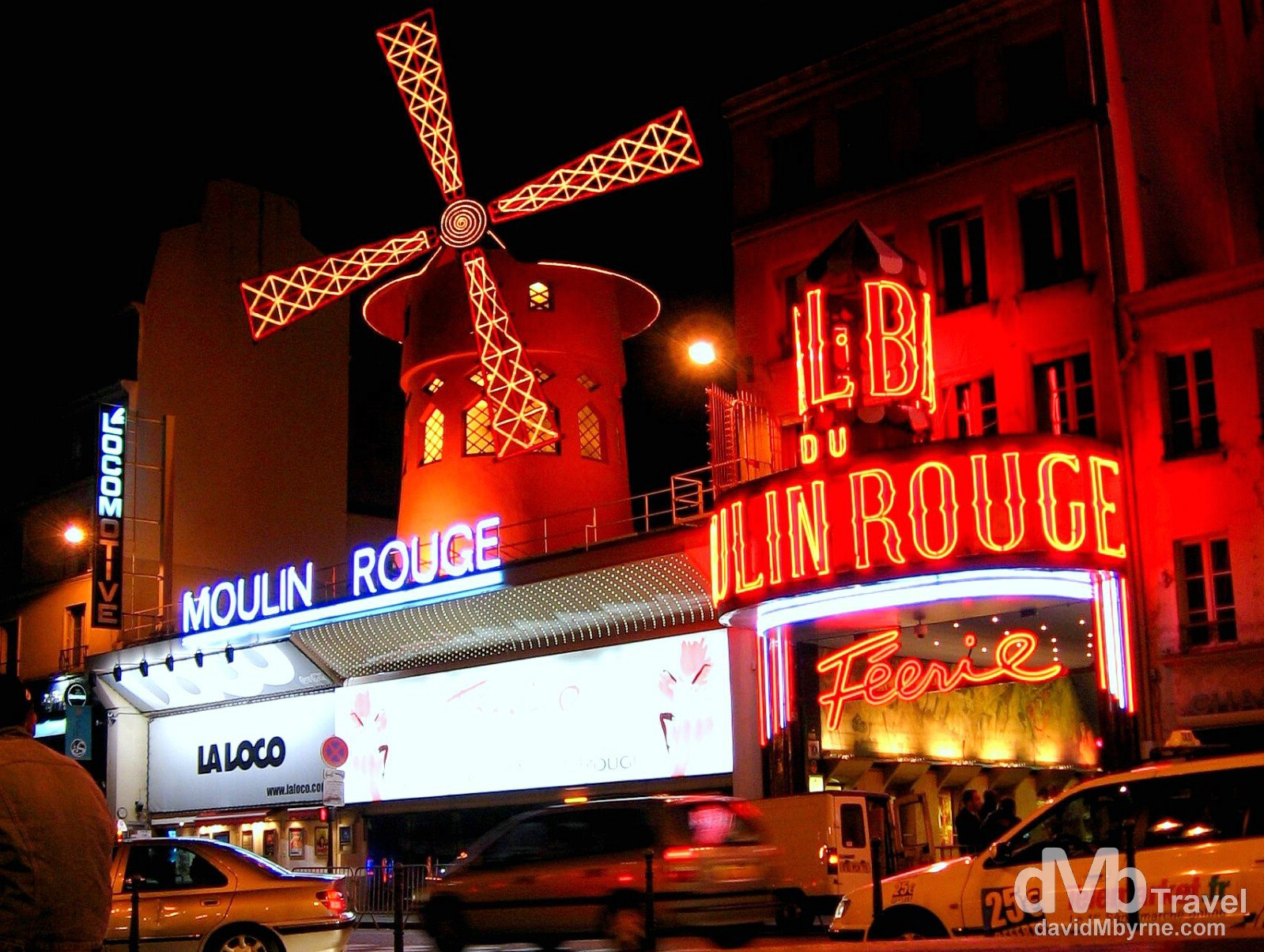
The iconic Moulin Rouge cabaret in the Pigalle district of Paris, France. August 21, 2007.
Paris In 2015
When travelling around the world it seems like every second city has claims on being the Paris of somewhere. But the terra firma under me as I type is the real deal, the Paris of France. All I can say is God bless you Paris, you are beautiful. But you know it, you’re way too busy, & you’re way too expensive.
See more from my 2015 visit to Paris.
